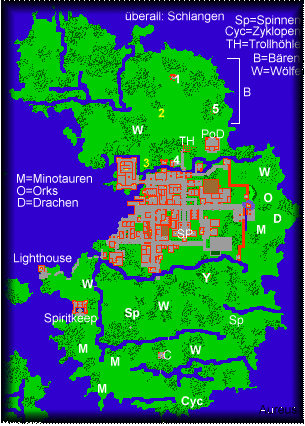dwo8C5z2
Joined: 10 Feb 2011
Posts: 1707
Read: 0 topics
Warns: 0/5
Location: England
|
 Posted: Fri 13:59, 25 Mar 2011 Post subject: Finally . . . Let’s Execute the Project! Posted: Fri 13:59, 25 Mar 2011 Post subject: Finally . . . Let’s Execute the Project! |
|
|
We began our "Project Management . . . by the Numbers" Project Management Lifecycle with Phase One - Concept and Feasibility where we secured agreement with our Project Customer on the definition of the project's objectives and a high level time and cost against those objectives.
Then we finished our detailed planning of the project with Phase Two - Organization/Schedule where we created our Work Breakdown Structure and Critical Path Analysis to get all stakeholder buy-in to the executable tasks.
Our Project Customer has agreed with us to move forward with a +/- 10% time and cost estimate against the refined and detailed objectives. We now have a project schedule for the team to follow and report on.
Whew! That was a lot of project management work to get our project ready for Phase Three - Execution, but without the pre-work, our execution phase is not properly planned. But we did do it and we are ready to roll.
So, let's beak down Phase Three - Execution.
Implementation of the Project
The execution phase of the Project Management Lifecycle is literally where we do the work of building the project. Whether it is the building of a house project, changing a process project, or anything kind of project in between, we need a place to say that the work has begun.
It is possible to start Execution while still doing some of the Phase 2 planning, but the risk of changes and miscommunication needs to be weighed.
Time and Cost Control
During Phase 2 - Organization and Schedule, your planning included time and cost estimates at +/- 10 (or so). As the clock ticks and the money spends, it is imperative to keep track of the outgo to keep control of the time and cost.
Updated daily, the Critical Path Analysis will be your best tracker of time and will allow you to see how to adjust tasks (if at all possible) to make up time. A simple spreadsheet with anticipated costs against actual costs will do for the money.
Objective Control
At this point everyone seems to want to add or change the objectives to the project, and you certainly can't blame them, but you have to control them.
Remember, there can be no changes to agreed-to time, cost or objectives without your Project Customer's approval. You have worked hard building this relationship and now is the time to lean on it and appreciate that hard work.
Make sure you have change control processes in place, but be ready to "look like the bad guy" because you have to get the approval for changes. It will pay off.
Stakeholder Management and Communication
Stakeholders seem to come out of the woodwork during Execution regardless of how hard you tried to include them during the two planning phases. It's simply the way of the world.
The Project Definition Document that you started in Phase 1 - Concept and Feasibility and carried through Phase 2 - Organization and Schedule has the "rules" of the project clearly stated, including the roles and responsibilities of the Project Customer. Feel free to distribute to any new "stakeholder" that decides to come aboard and make changes.
You also have your Phase 1 presentation that you can update and use to brief new stakeholders.
Reporting to Project Customer and Stakeholders
Be sure to keep everyone informed of the good, the bad and the ugly. The more they all know, the less surprises on delivery.
Consider holding weekly status meetings and maybe even send written daily reports during critical times.
In Conclusion . . .
Keep in mind that not all changes are bad. In fact, any change to your project is good as long as it enhances what it is you and the project set out to do.
Sometimes the best laid plans have to be changed due to circumstances beyond the Project Manager's control, and even organizational politics seem to have a way of surfacing during Execution.
The key to a successful implementation is to remember that the Project Manager's job is to manage the process of project management,[link widoczny dla zalogowanych], and Phase 3 - Execution is just another piece of the process.
Expect the unexpected, keep a cool head and realize that your leadership skills are on display to everyone (not just your team) during Phase 3 - Execution.
* * *
Next month we wind down the project management process with a robust Phase 4 - Review and Audit. It won't be just on whether the project was successful, but rather, the project management. See you then.
The post has been approved 0 times
|
|


